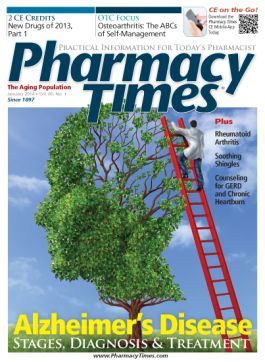Publication
Article
Pharmacy Times
Generic Medications Expected to Cause Single-Digit Drug Spending Increases Over Next 5 Years
Author(s):
Patent expirations for many blockbuster drugs will continue to influence drug spending through 2017 as lower-cost generic drugs drive costs down, according to the results of an IMS Institute for Healthcare Informatics report.
Total global spending on medicines is expected to reach $1.2 trillion in 2017, after exceeding $1 trillion in 2014, the IMS Institute for Healthcare Informatics’ 2013 The Global Use of Medicines: Outlook Through 2017 report states. Despite the increase over the $965 billion spent in 2012, developed pharmaceutical markets in the United States, Japan, and Europe are expected to see only modest growth in drug spending.
The anticipated single-digit increases will come, in part, from the increase in generic drug availability, and the emphasis on using generic drugs if they are available, the report explains.
In addition, the blend of branded and generic medications within the total is expected to shift toward generics during the next 5 years. Although branded medications will hold two-thirds of the total market, global spending on generic therapies is expected to increase from 27% of total spending in 2012 to 36% of total spending in 2017.
Diabetes and pain medications have the highest predicted global sales in 2017 of traditional pharmaceuticals at $34 to $39 billion and $31 to $36 billion, respectively. Although traditional pharmaceuticals account for 12 of the top 20 drug classes on IMS’ spending by therapy area prediction list, only pain and diabetes occupy spots in the top 5, and they failed to garner the top spot. Specialty therapies for oncology, anti—tumor necrosis factors, and asthma/chronic obstructive pulmonary disease drugs took the 3 open spots in the top 5, with oncology therapies having the highest anticipated sales in 2017 at $74 to $84 billion.
Other traditional pharmaceutical categories on the list include other central nervous system drugs, hypertension, dermatology, antibiotics, cholesterol, antiepileptics, antipsychotics, antiulcerants, antidepressants, and attention-deficit hyperactivity disorder therapies.
Of the $622 billion in spending in developed markets in 2012, 16% was spent on generic medications, the report states. The report predicts that in 2017 21% of the $650 to $680 billion in total spending in developed markets will be on generic medications.
Loss of patent exclusivity, slower uptake of medications, and more restrictive access approaches are expected to influence a $113-billion decline in absolute spending on brand medications in developed markets, particularly in the United States. An increase in generic spending, predicted at $40 billion, will offset the decrease in brand spending.
In addition, 34% of 2012 US brand spending—approximately $83 billion—will shift to lower-priced generic drugs, the report predicts. Expiring exclusivity patents on 4 of 10 top brand name medications in 1 or more of the developed markets will open brand name manufacturers to additional competition over the next 5 years. Most of the competition from patent expirations will occur in the United States.
Annual spending growth is expected to reach a low point in 2013 before increasing slightly—by 5%—again, the report states. The lower-price legacy for hypertension, dyslipidemia, peptic ulcer, depression, and other high-volume medications seen during the 2012 and 2013 generic medication cliff will continue to influence costs, however.
“This is particularly apparent in countries, such as the US, with high volume penetration of significantly lower cost generics, with the consequence that even though volume demand continues to rise for developed country primary care medications due to aging populations, cost growth has slowed considerably,” the report states.
Within the United States, expanded health care access and fewer brand name patent expirations are expected to influence the increase.
Most of the spending growth in developed markets can be attributed to specialty pharmaceuticals rather than traditional pharmaceuticals used to treat chronic disease states, the report continues. Although predictions anticipate an average of 35 new product launches per year over the next 5 years, many of the new molecular entities expected to launch will target specialty disease areas and orphan diseases.







